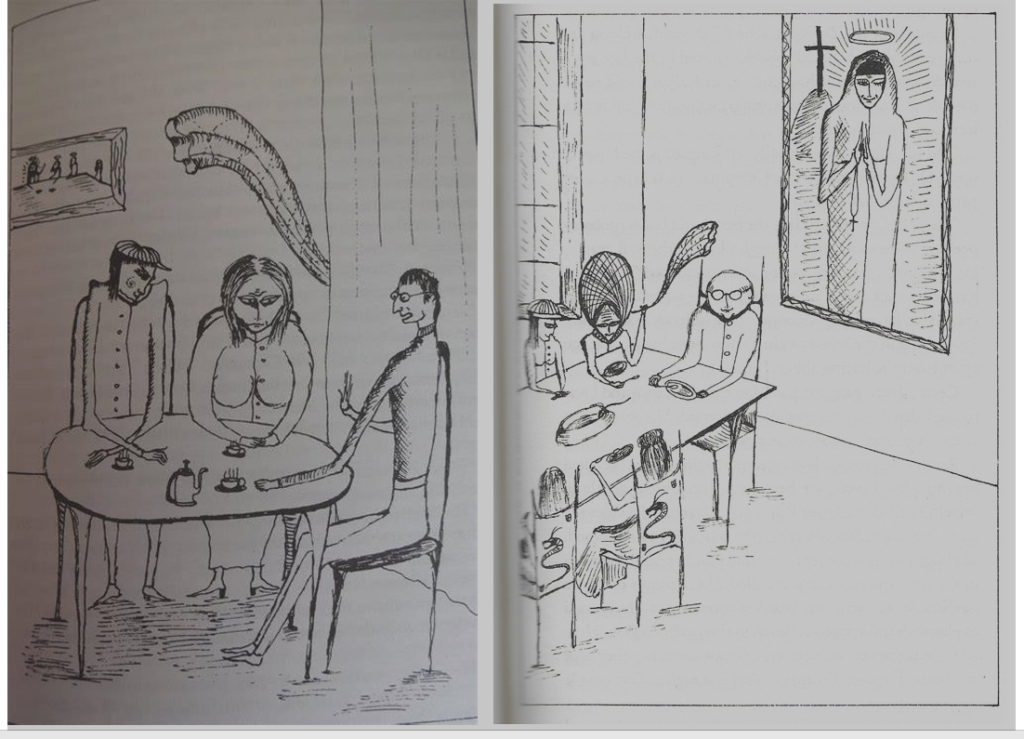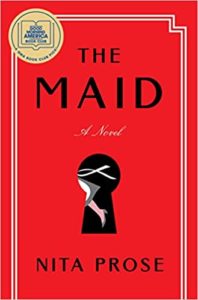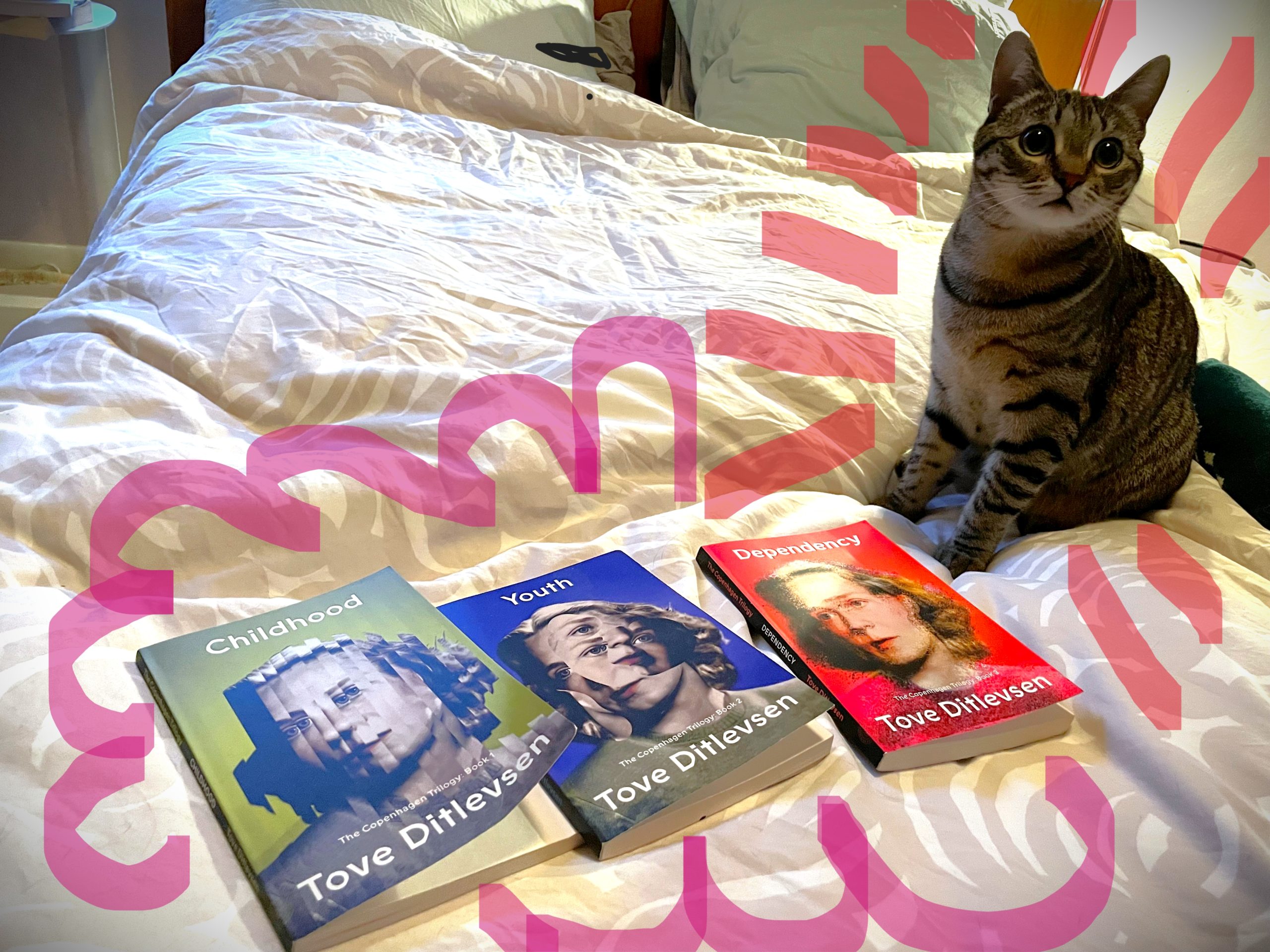
Slim
Howdy m’dears: It’s been a while, but I have been reading a pile of slim books that contained an outsized bounty of entertainment and I couldn’t tear myself away. I’ll share the best ones here:
- Slim, bright and shiny books:
People From My Neighborhood by Hiromi Kawakami
I haven’t read a collection of short stories in a long while but the cover of Kawakami’s book kept snagging my attention each time I passed it in bookstores. Because I do believe you can judge a book by its cover and one reviewer used the phrase palm-sized stories to describe what was awaiting within, well I finally gave myself over to the temptation.
And no surprise, it turns out People From My Neighborhood was a funny and weird read from one story to the next.
There are 36 palm-sized stories (never carrying on for more than three pages) in People From My Neighborhood and all take place in the same unnamed Japanese neighborhood. The characters (a few who reappear regularly throughout the book and others who pop up once and then wink off) are sometimes common folk who happen to exist in a place where the extraordinary occurs.
In other stories it is the central characters who are extraordinary (a talking baby, a ghost, a princess, and even an American!) trying to get along in this ordinary and oblivious neighborhood. In one tale a baby follows a narrator to her house and lives with her for years and years, never growing (but does talk some smack and can be a bit of a jackass). We never gain insight as to the why of the baby who refuses to grow and go. And this is true for each story in the collection; the why is never shared. The reader is simply asked to accept that the extraordinary and weird exist in our everyday. When you are ready for easy-going fanciful reading, pick up People From My Neighborhood. And then take a look at your neighborhood with a freshly enlightened eye.
Leonora Carrington was a British-born Mexican painter and author who wrote the novel The Hearing Trumpet in 1974. The book has recently been reissued. The work is referred to as a surrealistic novel and that seems fair given how Carrington plays around with the boundaries of time and space and the physical world. It is also filled with charm and whimsy up to the very tippy-top of the protagonist’s hearing trumpet.

In the first pages the narrator, 92-year-old (mostly deaf) Marian lets us know she has been trying to get away from her son and his family, with whom she lives. She feels she is a burden. Then everything changes when Marian’s friend presents her with a hearing trumpet, which is “encrusted with silver and mother o’pearl motives “. Marian uses the trumpet to spy on her son and daughter-in-law and discovers they plan to send her to a rest home.
Marian isn’t going to miss her family but she is distressed she will have to conform to someone else’s rules – which she fears may go as far as insisting she participate in organized sports. Marian thinks to herself, “ I never suffer from loneliness. I suffer much from the idea that my loneliness might be taken away from me by a lot of mercilessly well-meaning people.”
Marian’s fear is valid, the rest home is managed by a cult of perverted doctors and administrators. And Marian schemes to get to the bottom of it all and reveal the corruption.
Marian’s detecting is initiated by a portrait of a leering abbess who appears to watch her during meals. Marian’s obsession with the painting leads to a rabbit hole exploration of the life and times of Rosalinda Alvarez de la Cueva, abbess of the Convent of St. Barbara of Tartarus. Carrington’s skillful telling of the abbess’ life reveals layers of random worlds, which in turn lead Marian to some auspicious insights.
There is a lot of weird fun going on in this frothy surrealistic trip. When you feel an urge to dip a toe into a wonderland, check out Marian’s hearing trumpet tale. And don’t forget to enjoy the illustrations.
- A slim mystery book:
The Maid by Nita Prose is a debut novel and my response to the initial effort is, wowie, nice one and can’t wait for more. The Maid takes place in a boutique hotel, which proves to be a handy setting for a locked-room mystery.
The locked-room format is a favorite of mine and Prose enhances the storyline with the protagonist, Molly Gray, a neurodivergent maid who works at the hotel. The book is delivered in Molly’s unique voice, which makes reading The Maid an immersive event.
Molly is aware she moves through the world differently. “The truth is, I often have trouble with social situations; it’s as though everyone is playing an elaborate game with complex rules they all know, but I’m always playing for the first time.” The reader is immediately in on this information about Molly and it ratchets up the tension as we watch our fine heroine move (mostly) obliviously through the corrupt world inside the hotel.
Molly has recently lost her beloved gran, who in the past helped her negotiate the world with a bit more caution. This makes Molly’s discovery of a dead body in a guest room even more worrisome, because it appears to the readers (not so much to Molly) that she is being set up to take the fall for the killing.
The book is filled with multiple interesting characters, some of whom help Molly but others who are obviously working against her (and many of these people are trusted by Molly).
The Maid is a great debut and Prose created a marvelous character with Molly. The book has whetted my appetite for additional locked-room mystery stories. Pass along any recommendations you may have.
- A trio of slim books.
The Copenhagen Trilogy by Tove Ditlevsen is a memoir written in the late 1960s and recently rereleased in three slight volumes, Childhood, Youth, and Dependency. Ditlevsen was a popular poet and a prolific novelist in mid-20th century.
As I read Ditlevsen’s memoir I was struck by her matter-of-fact narration. There is no hand-wringing over her stark upbringing and no resentment about the time and place into which she was born – and oh boy it was crummy; Ditlevsen definitely lost the birth lottery but you won’t read that from her. Ditlevsen was born into a working-class neighborhood that was part of the red-light district in Copenhagen. Life in the neighborhood was pre-ordained for all– some school, sketchy food, lots of work, marriage and children. All of that with the smallest bursts of happiness – but just here and there. For women there was little chance of escaping motherhood and it was best for children if there was a father at home although Ditlevsen shares snippets of young girls pregnant early and abandoned -by everyone.
Tove Ditlevsen was luckier than most of her neighbors, but you don’t foresee that immediately in the first volume – Childhood. It is a slow reveal over the first two books that writing will save Ditlevsen from the bleak fate that smothers everyone she knows. Around the age of eight, Tove began to keep a journal of her poems, which was the start of her lifelong passion. She was a good student and encouraged to carry on by teachers but additional schooling was too expensive for her family and Ditlevsen’s mom wanted to buy a radio with the added income Tove was expected to provide. Ditlevsen left school at 12.

Youth recounts the years when Ditlevsen’s goal of getting her work published in any way possible defined her days. Ditlevsen’s singular focus takes her down bohemian paths where she takes up with offbeat characters who add splashes of color to Ditlevsen’s stark life. Ditlevsen eventually becomes part of a community that publishes a magazine filled with youthful writing and leads a support group of sorts where the blossoming literary crowd can discuss their work. It is also in Youth where Ditlevsen begins to move through marriages and men and her work is published regularly; innocence and female identity become the foundational themes of her work.
Dependency is a hard read centered on Ditlevsen’s last two marriages (she was married four times) and the development of her addiction to Demerol and other drugs. Like all the words that came before in the trilogy, the final chapters in Dependency are delivered with a poet’s crispness. There are no excuses and little self-reflection about the why of her addictions -although to be clear it is her third husband who keeps her high (he is a doctor) while abusing her during drug-drenched states.
The Copenhagen Trilogy is masterfully written and escorts readers swiftly through the sad labyrinth of Ditlevsen’s life, although there is not a smattering of self-pity or regret in the three books. The Copenhagen Trilogy is a brave and Zen-like recitation of what was. It is also slightly Hallmarkian in its underlying assertion that a life dedicated to love and art will carry a person through the worst of times. – However, full disclosure: Tove Ditlevsen committed suicide in 1976 (this is likely no surprise, as most of us know damn well those Hallmark endings are pure fiction).
And by the way, I just finished two outstanding (non-slim) books. I can’t wait to share their brilliance with you all. Until then, keep that TBR pile high

